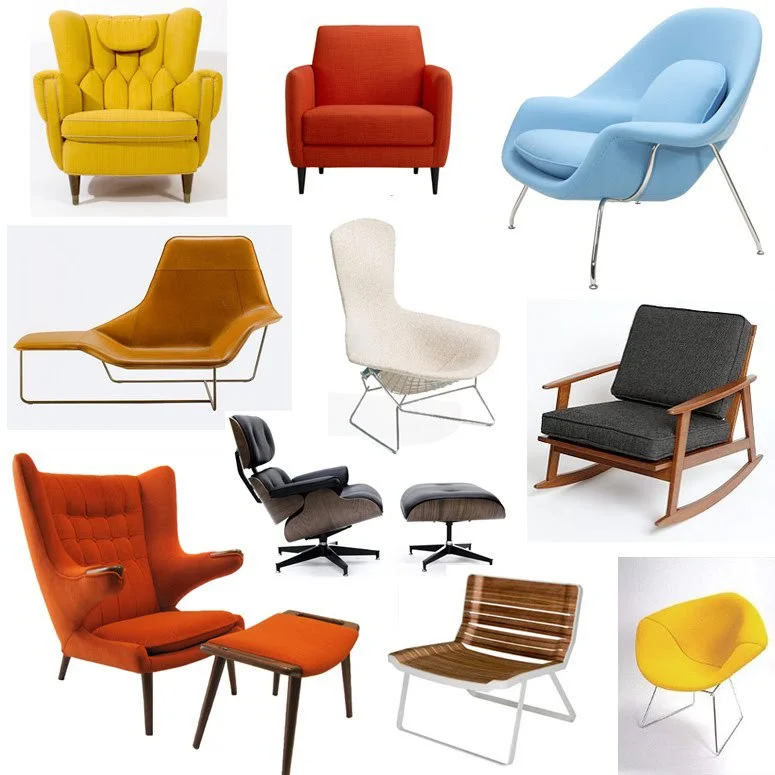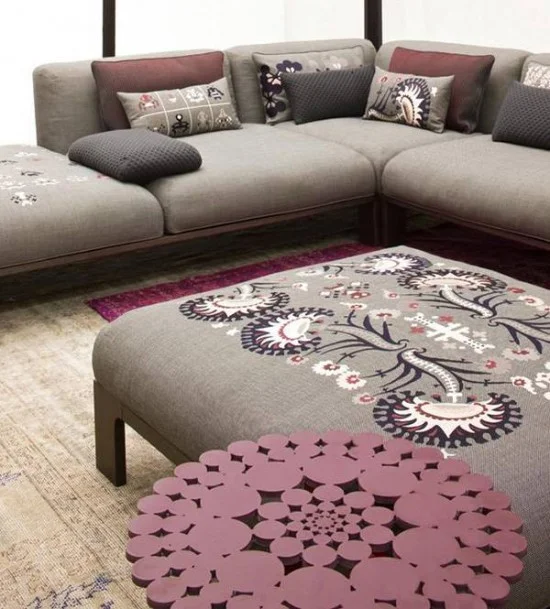Not Feeling Mid-Century
Jay Johnson - We don’t mean to complain, but there are some design trends around—think of faux animal heads, for instance—that we’d like to twitch our noses and make disappear forever. My design partner Irwin Weiner ASID, however, surprised me recently by launching a mini rant against mid-century modern design. How interesting ... and how un-Dwell and un-cool.
I probed beneath the surface of his exclamation, “Mid-century modern needs to go into hibernation for awhile,” and came up with this advice for interior designers and homeowners, alike. Hey, take it or leave it; Irwin’s observant of our industry, and he likes to express his “deep thoughts” about home design.
Blame Mad Men. Did retro style create Mad Men or did Mad Men create retro style in our contemporary era? The popularity of this cable TV show is undeniable, and part of its appeal is the retro chic look it faithfully duplicates for the small screen. Anything on TV or in the movies is fair game for designers to admire, copy, and follow. It’s highly relatable for homeowners, too. “Oh, our living room is just like Don Draper’s!” But we think it’s a mindless path to rely on the past for design inspiration. Sometimes it boils down to not having the courage to explore newer, more daring contemporary designs.
Research Today’s Trailblazers. Charles and Ray Eames, Milo Baughman, Edward Wormley, and many other mid-century designers created beautiful, ground-breaking furnishings and design styles that explored the creative use of materials like plastics, molded plywood, and steel should be celebrated. But it’s a designer’s responsibility to see who is blazing new trails in today’s design world. Peruse the exhibitors of Salone del Mobile, for instance, and you’ll see startling new styles and furnishings that should inform your interiors. Be bold enough to embrace the new, as in Patricia Urquiola's stunning contemporary visions for Moroso (below).
Be Discerning. It’s important to know every past furniture style and realize that these can be combined into new design schemes for your home. A great eclectic interior can successfully pull elements from disparate styles into a unified whole. The cautionary note about selecting furnishing from any past period, whether it’s mid-century modern or rococo, is to know that there are good quality and bad quality pieces circulating out there. The problem with mid-century modern furnishings is that there is so much inventory that it’s often difficult to tell what’s good and what’s horrid. But take our word for it: it’s not all good, just because it has mid-century modern cache.
Try Something Else for a Change. Why not do a fresh take on a Victorian interior? Why not shoot for the Art Nouveau moon? Go deco! If any period piece is fantastic, why can’t we see it as being applicable to the best of contemporary style? Aubusson rugs, for instance were a big hit in the 1980s, and why not bring them back for an ultra-modern interior?
Down with Icons. People are insecure, and many homeowners may be tempted (as will their interior designers) to default to an iconic furniture piece, faithfully reproduced from the mid-century modern repertoire. Something by Eames or Eero Saarinen perhaps. Look at the 1946 Womb Chair. Yes, it’s a beautiful chair, but why not find a contemporary or retro piece that is equally outrageous and sculptural (see the Edra creation in the photo above)? Rethink and analyze all furniture recommendations instead of buying something that’s expected or known by the masses, or even something that’s widely admired. Irwin’s advice is to “Seek out designers who are true artists, people who are really thoughtful about their craft. I'd like you and your designer to love something new for its own merits. Show the way and educate one another by first thinking for yourself. Let’s all stop following trends like sheep.”
Revert to Heirloom Mentality. You may not want to spend much on your interiors and furnishings, and your budget may be stretched too thin. Please see, however, the downside of purchasing (for instance) all mid-century modern furnishings, which are both plentiful and reasonably priced. The downside of having everything be inexpensive is that it tends to give an interior a throw-away, disposable, temporary aura.
A generation or two ago, families had pieces passed down from parents to children. People wanted to make better quality purchases knowing that they would add value to their estates and bring longer-lasting beauty and value to their children’s homes. People pondered furniture pieces longer “back then.” Today, people don’t think twice about getting tattoos, and furniture purchases are made hyperlink-fast online. Work with your interior designer to let her or him know that you believe that a furnished home is carefully composed over time. It’s curated like a fine art gallery, albeit more day-to-day comfortably. Art or furniture can be purchased with great thought and consciousness, versus furnishing an interior online in a weekend of shopping. The mid-century modern movement, and not just to pick on it alone, has taught us to get instant results and a recognizable “look” for less money and in less time. Let’s revert back to purchasing higher-quality and sometimes more expensive items that are properly considered.



